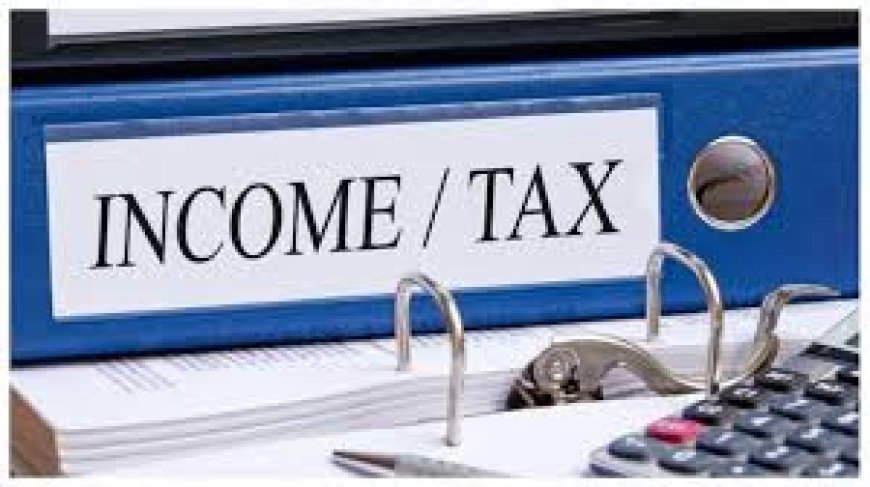Submitted wrong ITR form? Know how many times you can revise return
Filed the wrong ITR form? Learn how many times you can revise your income tax return under Section 139(5), key deadlines, and expert tips to avoid penalties.

Every financial year, as the Income Tax Return (ITR) filing season approaches, taxpayers across India hurry to meet the deadline. In this rush, filing the wrong ITR form is a common error. Fortunately, the Income Tax Department allows individuals and businesses to revise their return if they make a mistake—be it using the incorrect form, missing out on income declarations, or failing to claim deductions.
But how many times can you revise your ITR? And what should taxpayers keep in mind while doing so? Here's a comprehensive guide.
What Is a Revised Return?
A revised return is a facility provided under Section 139(5) of the Income Tax Act, 1961, allowing taxpayers to correct mistakes in the original ITR filed. These mistakes could include:
-
Filing the return under the wrong ITR form (e.g., using ITR-1 instead of ITR-2)
-
Omitting a source of income
-
Errors in claiming deductions or exemptions
-
Typographical or calculation errors
According to the Income Tax rules, a revised return replaces the original return, and it is considered the valid one for all practical and legal purposes.
How Many Times Can You Revise Your ITR?
Contrary to popular belief, the Income Tax Department does not impose a specific limit on the number of times a return can be revised—provided it is done within the allowable time frame.
“Technically, you can revise your return as many times as needed, but each revised return must be filed within the due timeline and replace the earlier one,” explains Rohit Maheshwari, Partner at TaxAdvisors India LLP.
For Assessment Year 2024–25 (FY 2023–24), the last date for revising the ITR is December 31, 2025 (unless extended by the government). So, if you filed your ITR on July 1, 2025, and realized a mistake on August 15, 2025, you can revise it multiple times before the December deadline.
Steps to Revise Your ITR If Wrong Form Was Submitted
-
Login to the Income Tax portal (www.incometax.gov.in)
-
Go to ‘File Revised Return’ under the 'e-File' tab.
-
Choose the correct ITR form applicable to your income profile.
-
Mention ‘Revised Return under Section 139(5)’ and provide the Acknowledgement Number of the original return.
-
Upload the revised ITR.
Make sure to double-check income sources, TDS entries, deductions, and exemptions to avoid repeated errors.
Impact of Filing the Wrong ITR Form
Filing the incorrect form can lead to a host of issues:
-
Your return may be considered defective under Section 139(9).
-
Processing may be delayed or rejected.
-
Refunds, if any, could be held up.
-
Legal complications in case of underreporting income.
“Choosing the correct ITR form is crucial. For example, salaried individuals with capital gains need to avoid ITR-1 and opt for ITR-2 instead,” says Anjali Sharma, a tax consultant based in Mumbai.
Key Deadlines for FY 2023-24 (AY 2024-25)
| Activity | Deadline |
|---|---|
| Original ITR Filing (Non-audit cases) | July 31, 2025 |
| Belated or Revised Return | December 31, 2025 |
Missing the December 31 deadline will mean you can no longer revise the return, and any errors in the filed return will stand.
Market and Taxpayer Sentiment
The tax-filing season often sees digital platforms reporting a surge in last-minute filings. Financial intermediaries, too, witness high demand.
“We’ve seen a 40% spike in requests for ITR revisions in the past two years, mostly due to incorrect form usage or omitted interest income,” notes Suresh Mehta, Director at FinPro Tax Services.
Such data indicate growing awareness among taxpayers but also highlight the importance of proper financial documentation.
Investor Outlook and Financial Discipline
For investors, especially those dealing in capital gains or multiple income streams, ensuring the right ITR form is critical. Filing the wrong form can affect loss carryforwards, refund claims, and even tax-saving declarations.
“If you’re an investor reporting stock or crypto gains, be sure to use ITR-2 or ITR-3 depending on trading volume,” advises Ritika Jain, a SEBI-registered tax planner.
Experts recommend that investors and high-net-worth individuals (HNIs) consult tax professionals or use government-authorized e-filing platforms to avoid errors and benefit from advanced features like auto-imported data from Form 26AS and AIS.
Final Word: Act Early, Not Often
While the law permits multiple revisions, it’s advisable to avoid frequent amendments. Repeated revisions may trigger scrutiny and show a lack of compliance intent.
Instead, focus on:
-
Using correct ITR form from the start
-
Verifying income details via AIS and Form 26AS
-
Reconciling TDS, advance tax, and self-assessment tax
-
Consulting a tax professional for complex cases
What's Your Reaction?
 Like
0
Like
0
 Dislike
0
Dislike
0
 Love
0
Love
0
 Funny
0
Funny
0
 Angry
0
Angry
0
 Sad
0
Sad
0
 Wow
0
Wow
0












































































